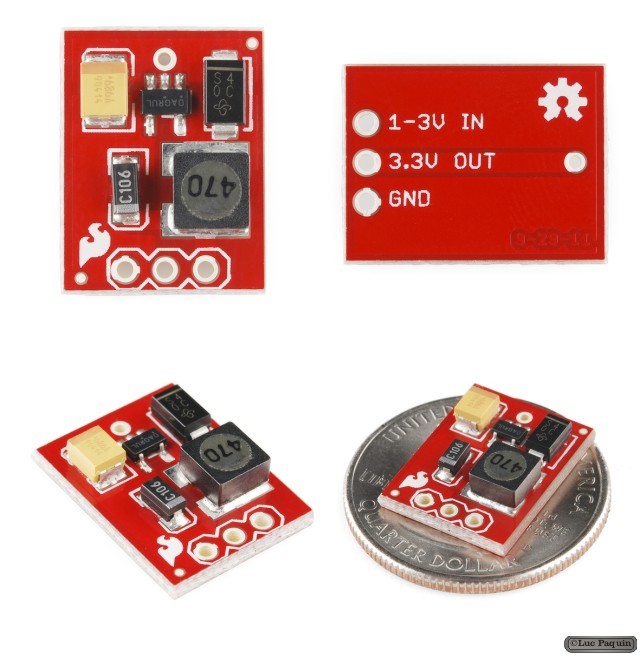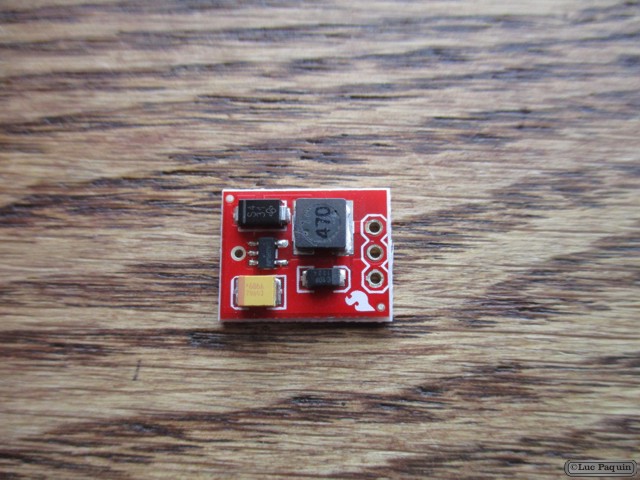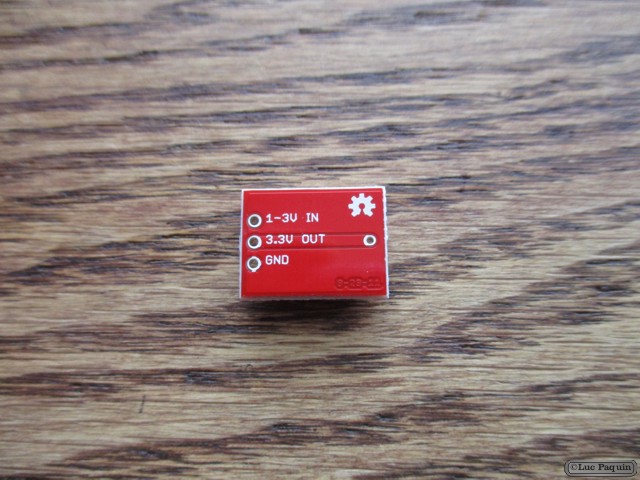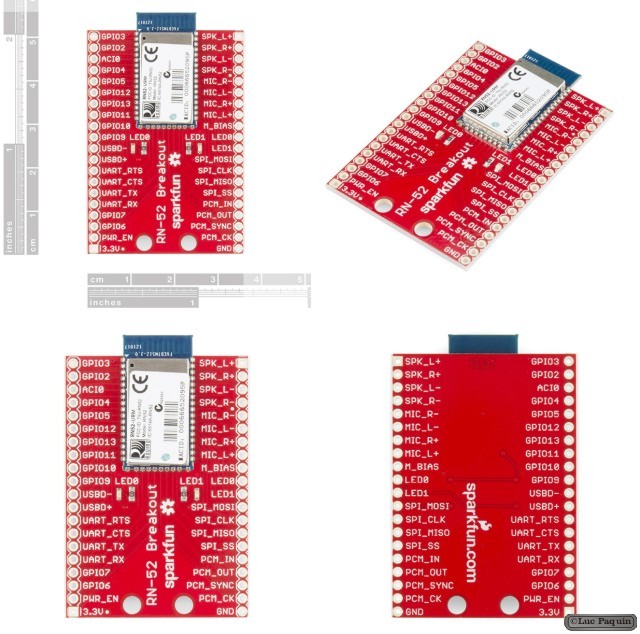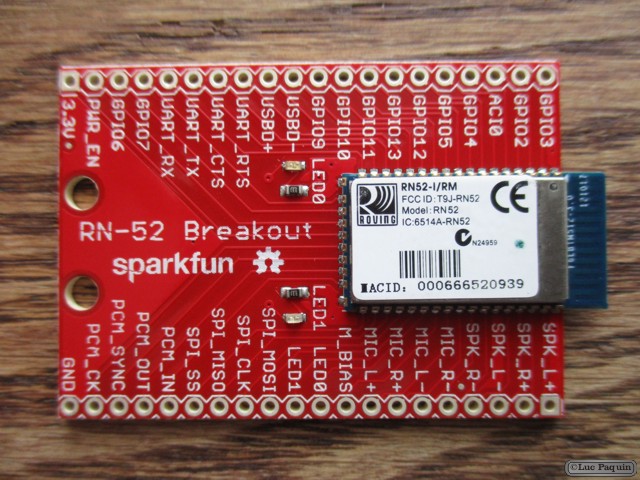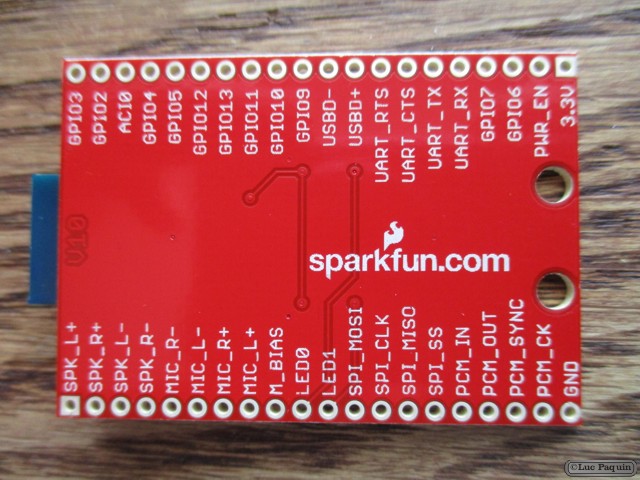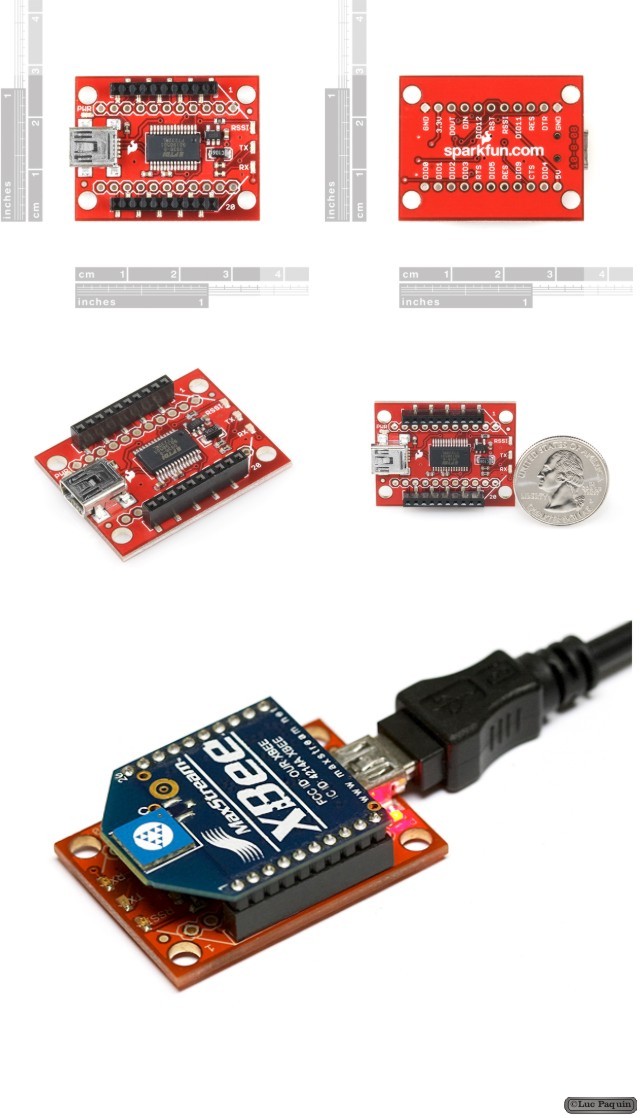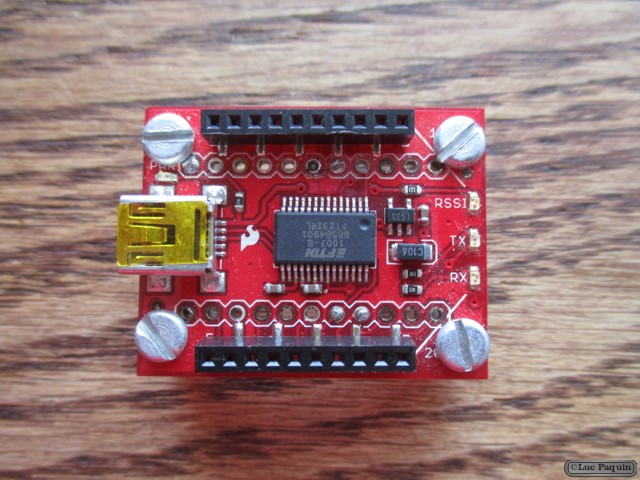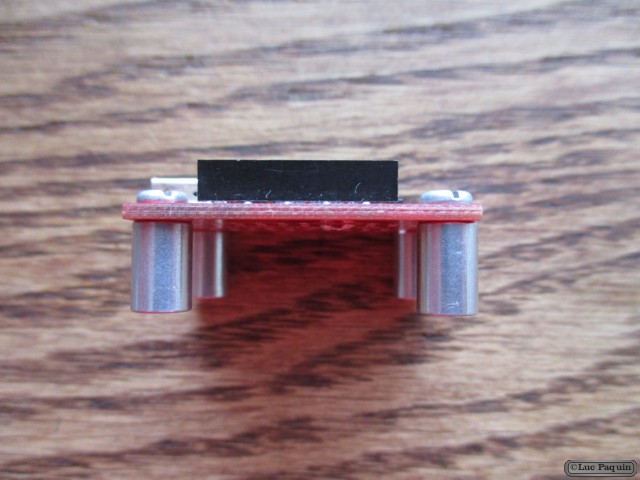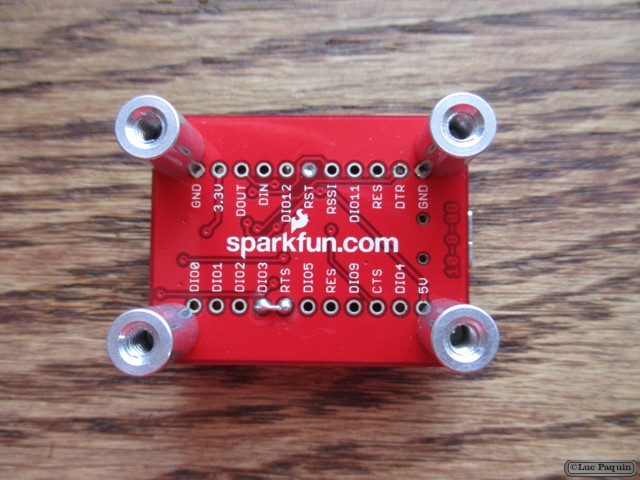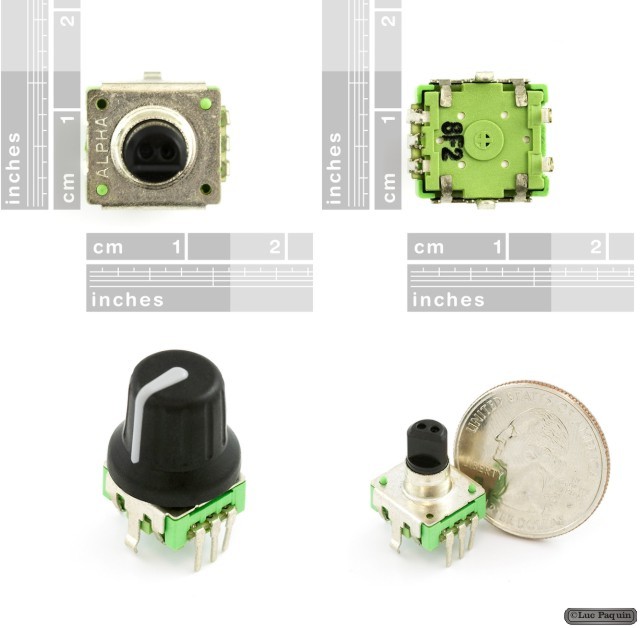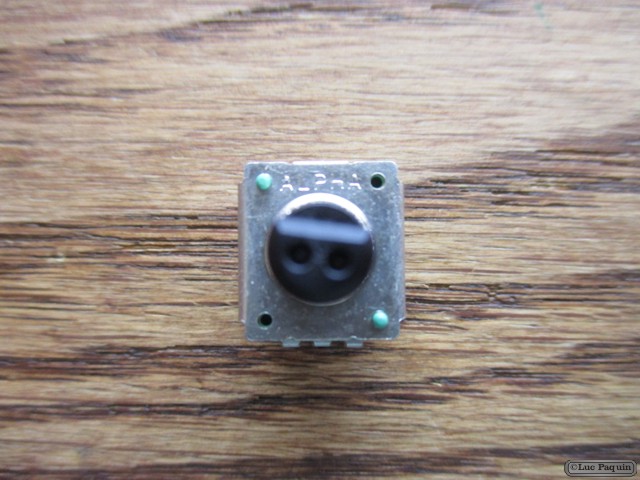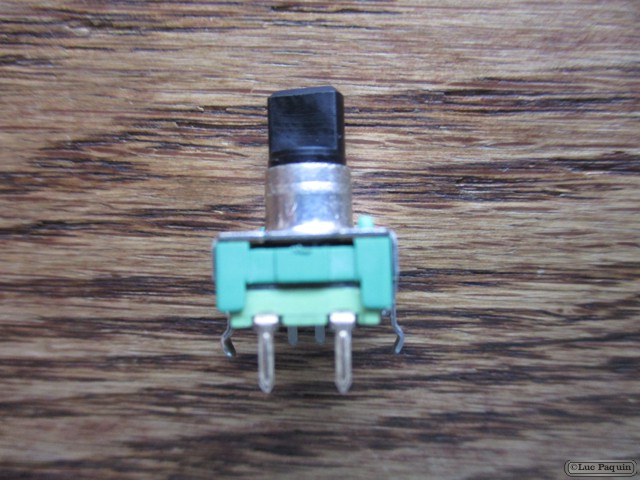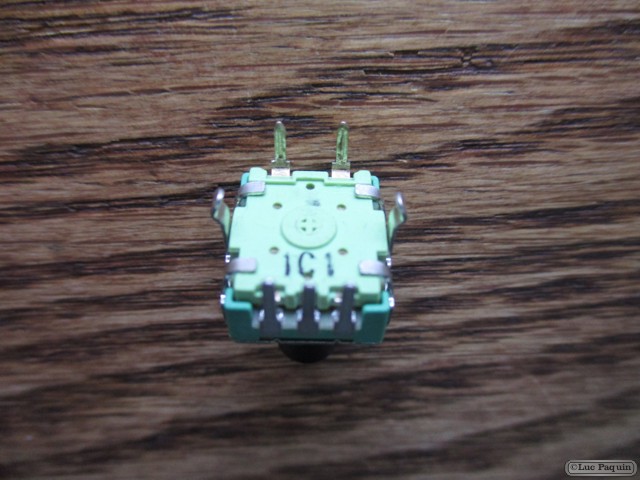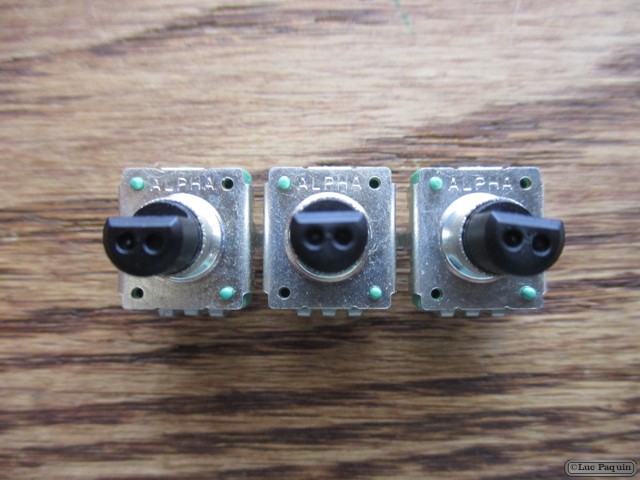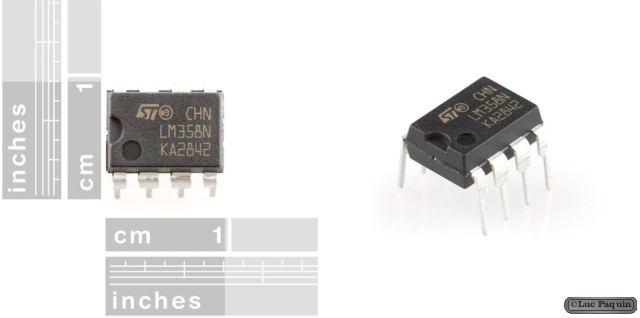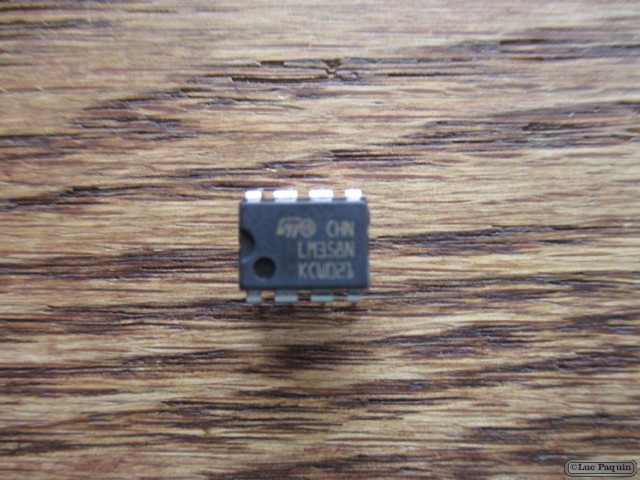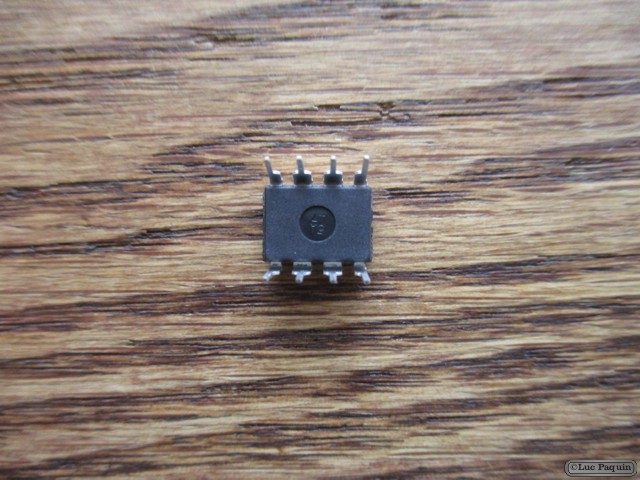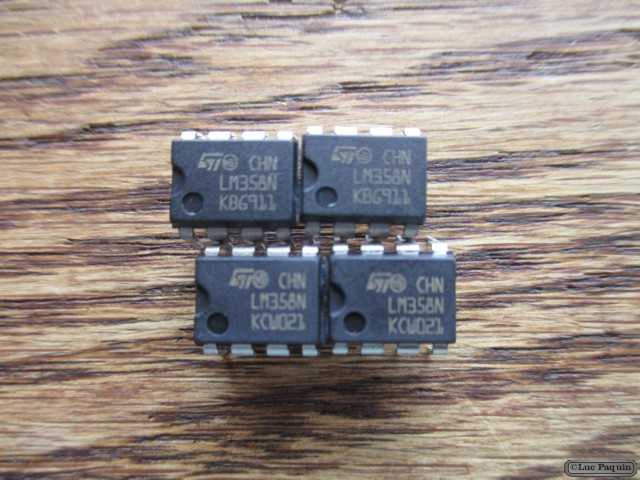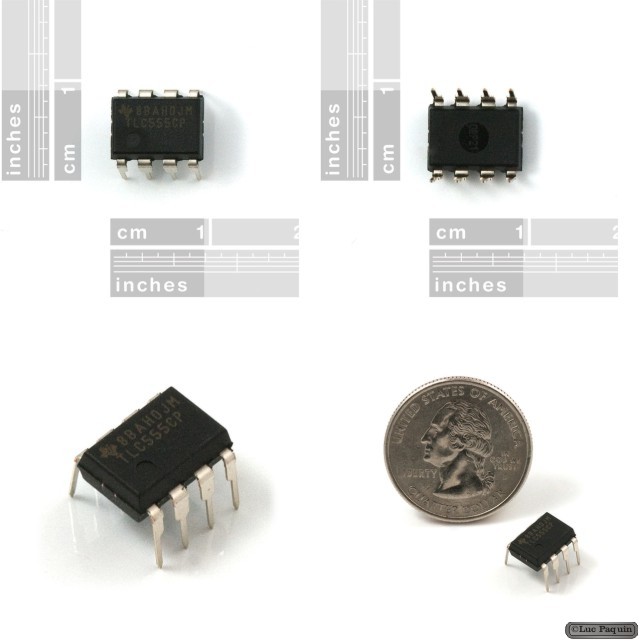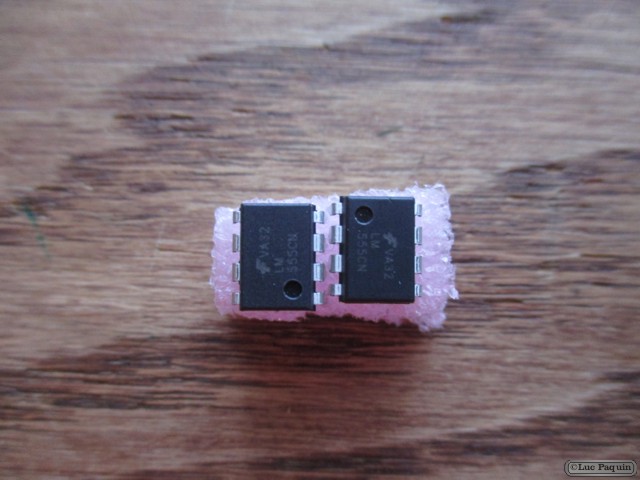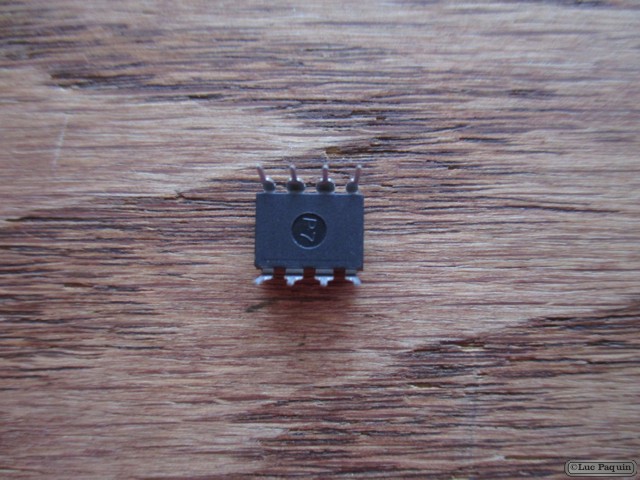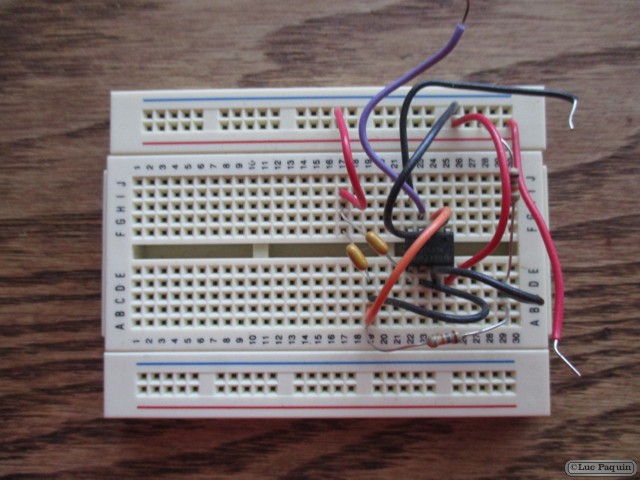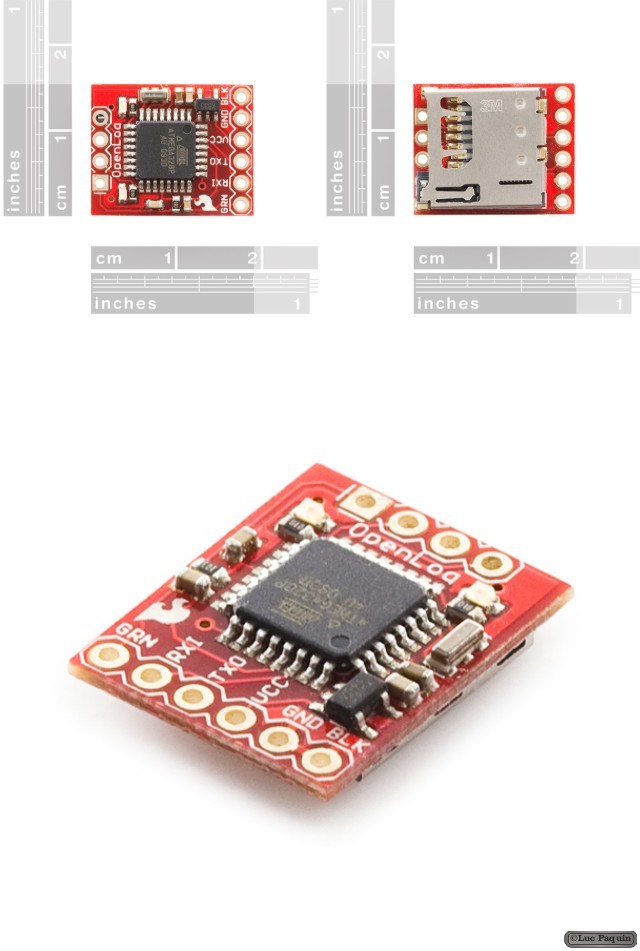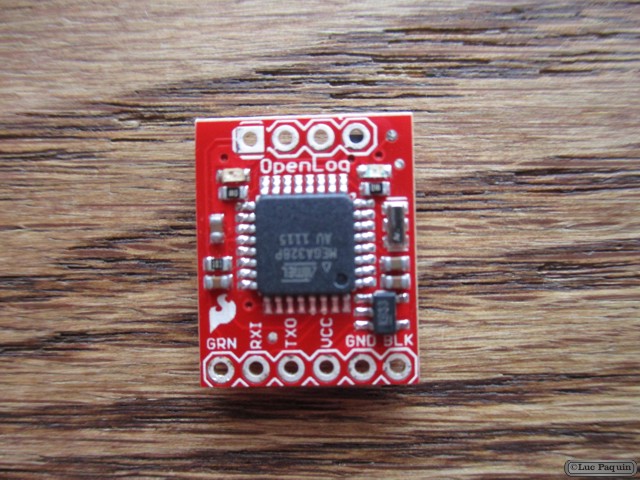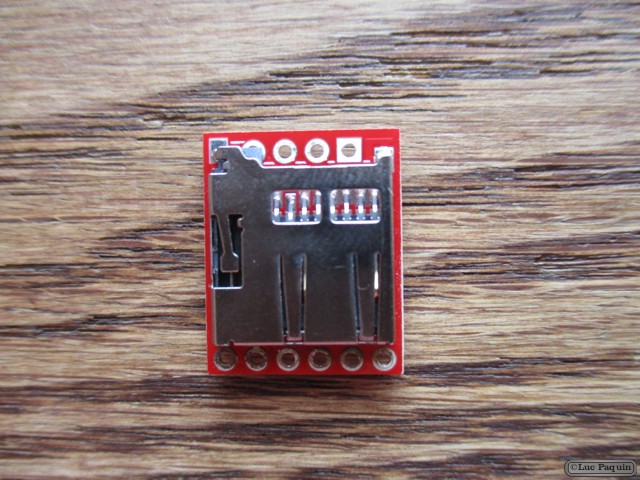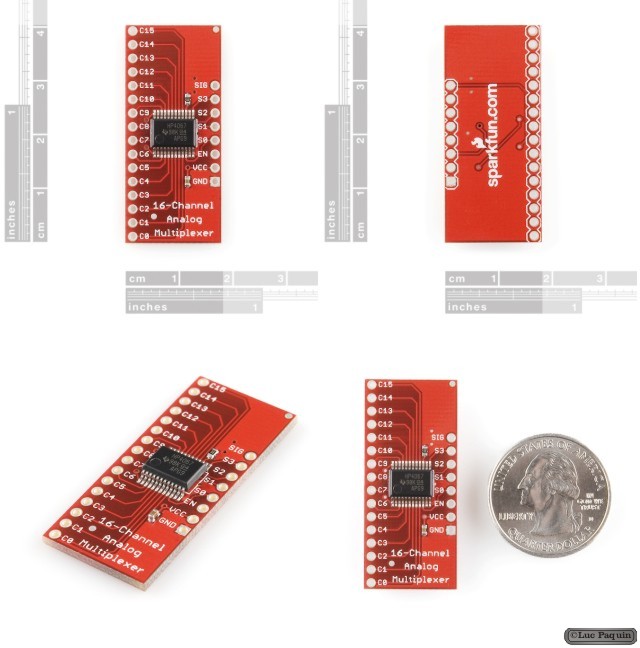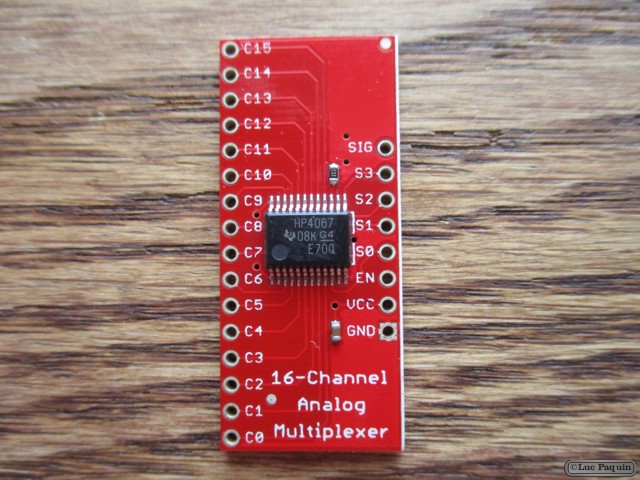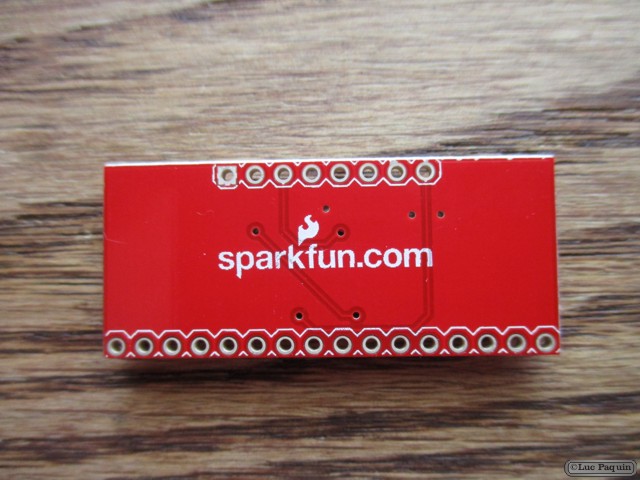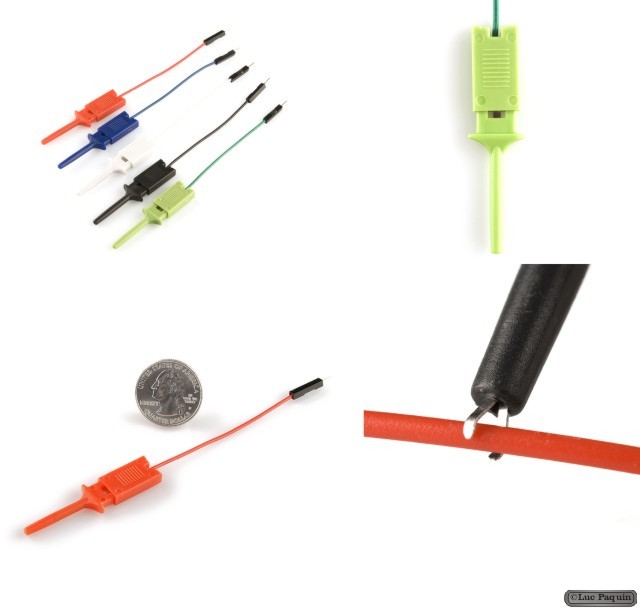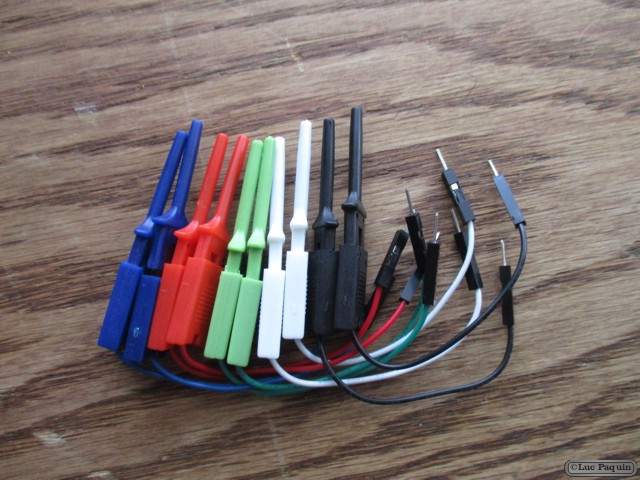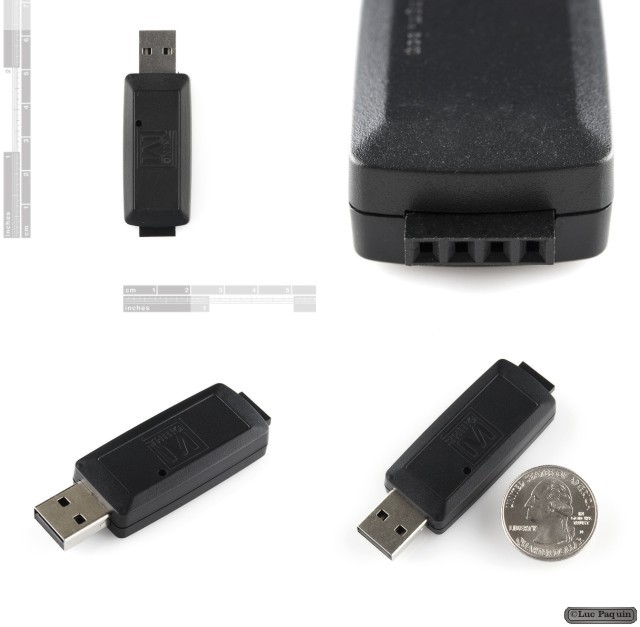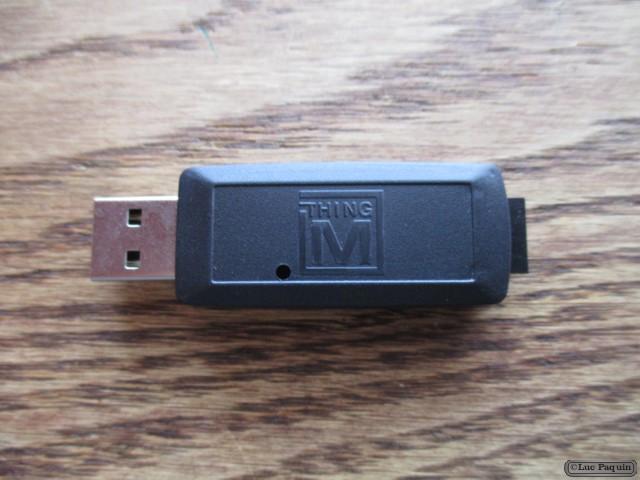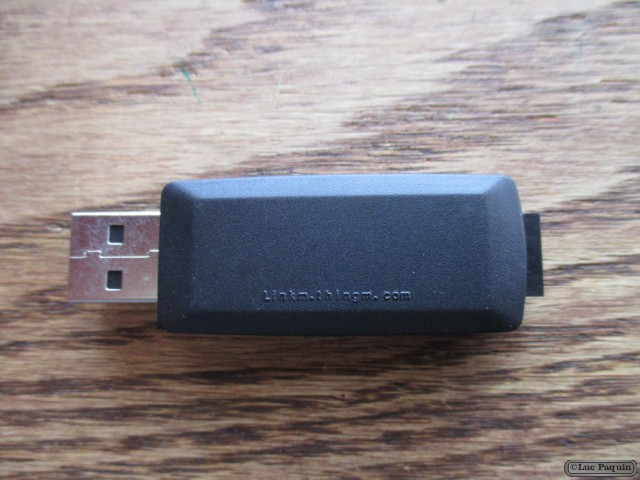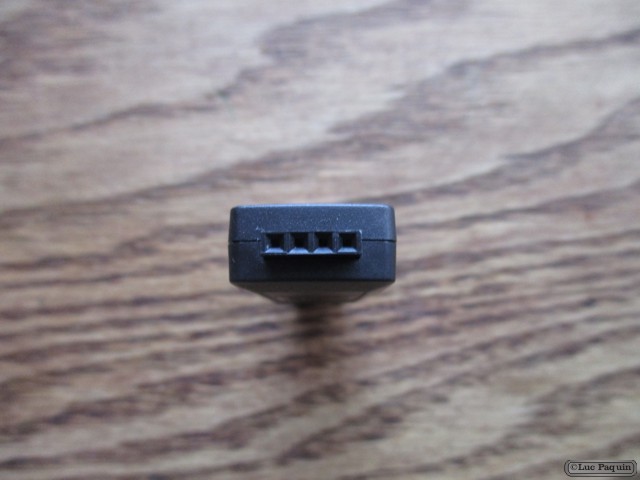SparkFun
SparkFun
SparkFun – 3.3V Step-Up Breakout – NCP1402
SparkFun: PRT-10967
Description: The NCP1402 is a 3.3V DC-DC converter. The breakout board will accept voltage inputs between 1 and 3 Volts (such as 1 or 2 AA batteries) and output a constant, low ripple 3.3V output capable of sourcing up to 200 mA. This board is great for supplying power to 3.3V sensors or providing 3.3V from a a single AA battery.
The breakout board includes the necessary peripheral components. The input, output and ground pins are broken out on a 0.1″ grid to allow easy access on a breadboard.
Don Luc
SparkFun – Audio Bluetooth Breakout – RN-52
SparkFun: WRL-11777
Description: The RN-52 Bluetooth from Roving Networks is an audio module that makes it simple for you to create a hands free audio system for your car or remote control your media center. With this breakout board we’ve made it easy for you to drop it into any project you could use it for. All pertinent headers are broken out and labeled for your convenience.
The RN-52 module combines a class 2 Bluetooth radio with an embedded digital signal processor (DSP). The module is programmed and controlled with a simple ASCII command language. It provides a UART interface, several user programmable I/O pins, stereo speaker outputs, microphone inputs, and a USB port.
Features:
- Fully qualified Bluetooth module
- FCC Certified
- Fully configurable UART
- Dual-channel, differential audio input and output
- Supports iAP profile
- Low power sleep mode
- Maximum over air data rate of 3.0Mbps
- Compatible with all Bluetooth products that support SPP (almost all do)
- Embedded Bluetooth stack profiles: A2DP, AVRCP, HFP/HSP, and SPP
- 3.0 ~ 3.6V operation
- Bluetooth Technology v3.0 compatible
- Class 2 power output
Don Luc
SparkFun – XBee Explorer USB
SparkFun: WRL-08687
Description: This is a simple to use, USB to serial base unit for the XBee line. This unit works with all XBee modules including the Series 1 and Series 2.5, standard and Pro version. Plug the unit into the XBee Explorer, attach a mini USB cable, and you will have direct access to the serial and programming pins on the XBee unit.
You get the red board only. XBee modules and USB cable sold below.
Don Luc
SparkFun – Rotary Encoder
SparkFun: COM-09117
Description: This is a 12-step rotary encoder with a nice ‘clicking’ feel. It’s breadboard friendly, and has a pretty handy select switch (by pushing in on the knob). The encoder is different from a potentiometer in that an encoder has full rotation without limits. The unit outputs gray code so that you can tell how much and in which direction the encoder has been turned.
Don Luc
SparkFun – Op-Amp (Thru-Hole) – LM358
SparkFun: COM-09456
Description: The LM358 is a great, easy-to-use dual-channel opamp. Opamps have so many applications we figured we should probably carry at least one in a DIP package. LM358 applications include transducer amplifiers, DC gain blocks and all the conventional opamp circuits.
If you’re looking for a good, standard opamp the LM358 should fill most of your needs. It can handle a supply of 3-32VDC and source up to 20mA per channel. This opamp is great if you need to operate two individual opamps from a single power supply. Comes in an 8-pin DIP package.
Features:
- Two internally compensated op-amps
- Internally frequency compensated for unity gain
- Large DC voltage gain: 100 dB
- Wide bandwidth (unity gain): 1 MHz (temperature compensated)
- Wide power supply range:
- Single supply: 3V to 32V
- or dual supplies: +/-1.5V to +/-16V
Don Luc
SparkFun – 555 Timer
SparkFun: COM-09273
Description: This is a common 555 timer/oscillator from TI. A classic for all of those first year circuits projects where you need to blink an LED, generate tone, and thousands of other great beginning projects. Google around for a huge list of resources and example projects.
Features:
- 4.5V to 16V supply
- 8-pin DIP package
- Timing from microseconds to hours
- Astable or monostable operation
- Adjustable duty cycle
- TTL compatible output
- Sink or source up to 200mA
Don Luc
SparkFun – OpenLog
SparkFun: DEV-09530
Description: The SparkFun OpenLog is an open source data logger. Simple to use, simple to change. We wanted to create a serial logger that just worked. Power up this device and it will start logging any received serial data at 9600bps. Sending Ctrl+z three times will drop out of logging and in to command mode. ‘new’ will create a new file. ‘md’ makes a directory. ‘?’ brings up the list of commands. OpenLog doesn’t do a lot, but it does log serial streams extremely well.
Example:
>new testfile.txt >append testfile.txt <(send large amounts of text followed by three ctrl+z characters)
That’s really it! OpenLog firmware is open source and is based on Bill Greiman’s sdfatlib. OpenLog currently supports FAT16 and FAT32 microSD cards (we’ve tested up to 64GB!).
All the design files (schematic, PCB layout, firmware) are open source released under the CC-SA v3 license and are available through GitHub.
Note: New firmware is available which allows the OpenLog to be used in Arduino 1.0 and also allows for higher baud rates. Check the links below for more information.
Features:
- Log to low-cost microSD FAT16/32 cards up to 16GB
- Simple command interface
- Edit config.txt file from a computer to change baud rate and other system settings
- Three modes:
- NewLog creates a new log every power up and immediately starts logging
- SeqLog appends a file called “SeqLog.txt” at every power up and immediately starts logging
- Command mode starts OpenLog at a command prompt at power up
- Configurable baud rates (2400 to 115200bps)
- Configure unit through config file or the menu system
- Power, ground, and RX-I are the minimum connections
- Reprogrammable ATmega328 using the Arduino IDE
- Two LEDs indicate writing status
- Input voltage from 3.3V to 12V
- 2mA idle, 6mA at maximum recording rate
Dimensions: 0.16 x 0.6 x 0.75″ (4 x 15 x 19mm)
Don Luc
SparkFun – Analog/Digital MUX Breakout – CD74HC4067
SparkFun: BOB-09056
Description: This is a breakout board for the very handy 16-Channel Analog/Digital Multiplexer/Demultiplexer CD74HC4067. This chip is like a rotary switch – it internally routes the common pin (COM in the schematic, SIG on the board) to one of 16 channel pins (CHANxx). It works with both digital and analog signals (the voltage can’t be higher than VCC), and the connections function in either direction. To control it, connect 4 digital outputs to the chip’s address select pins (S0-S3), and send it the binary address of the channel you want (see the datasheet for details). This allows you to connect up to 16 sensors to your system using only 5 pins!
Since the mux/demux also works with digital signals, you can use it to pipe TTL-level serial data to or from multiple devices. For example, you could use it to connect the TX pins of 16 devices to one RX pin on your microcontroller. You can then select any one of those 16 devices to listen to. If you want two-way communications, you can add a second board to route your microcontroller’s TX line to 16 device’s RX lines. By using multiple boards, you can create similar arrangements for I2C, SPI, etc.
The internal switches are bidirectional, support voltages between ground and VCC, have low “on” resistance and low “off” leakage, and to prevent crosstalk, perform “break-before-make” switching. The board also breaks out the chip’s “enable” pin, which when driven high, will completely disconnect the common pin (all switches “off”).
Features:
- 2V to 6V operation
- “On” resistance: 70 Ohms @ 4.5V
- 6ns break-before-make @ 4.5V
- Wide operating temperature range: -55C to 125C
Don Luc
SparkFun – IC Hook with Pigtail
SparkFun: CAB-09741
Description: These are good quality IC test hooks with a male connection wire. Instead of a single hook, these have two hooks that are capable of grabbing very small points (like SOIC IC legs). Comes in a bag of five IC hooks of different colors (black, red, white, blue, and green). We use them with the Bus Pirate logic analyzer harnesses but are very cool on their own.
Wire length is 2.5″ long. Male pin easily inserts into breadboard or other standard 0.1″ connector.
Don Luc
SparkFun – LinkM – USB to I2C
SparkFun: COM-09903
Description: LinkM is a USB adapter that addresses two of the most frequently-requested BlinkM features. It enables you to program BlinkMs without setting up a separate I/O board, such as an Arduino. It also lets you program or control multiple BlinkMs simultaneously. Plug it in, plug in a BlinkM, fire up the BlinkM Multitrack Sequencer, and start programming BlinkMs. It requires no drivers (when used with most operating systems), additional software or hardware. BlinkM’s sold separately.
Features:
- Driverless. Identifies itself as a USB Human Interface (HID) class device, which nearly every operating system supports without requiring additional drivers.
- Has no exposed components. Its hard plastic case makes it appropriate for long-term installation.
- Synchronizes groups of BlinkMs with a metronome signal so that their patterns do not drift in time (this even works when the LinkM is only connected to a power supply, such as an iPod USB charger).
- Works as a generic USB->I2C device, making it compatible with hundreds of standard I2C devices.
- Contains an I2C buffer chip for driving longer I2C bus cables.
- Open Source firmware, available from Google Code
- Open Source libraries for C, Java and Processing that work on Mac OS X, Windows XP/7 and Ubuntu Linux, also available from Google Code.
- Acts as an I2C master with built-in BlinkM metronome for synchronizing groups of BlinkMs so that their patterns do not drift with time
- Additional I/O pins on the board. AVR hackers can crack open the case to get access to digital I/O pins and use LinkM as a standalone microcontroller platform.
Don Luc
